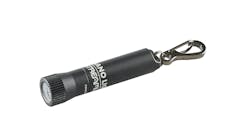Vehicles affected:
All vehicles with gas direct injection (GDI)
Tools used:
- Vehicle repair information
- Scan tool
- Fuel pressure tester
- Vacuum gauge
- Lab scope with pressure transducer
- Borescope
- Combustion/fuel injection cleaner
- Approved solvents for carbon cleaning
Less than 10 short years ago, the technology which is most widely known as Gas Direct Injection (GDI) was being used on under 5 percent of the cars being built. Due to stronger requirements to meet CAFE (Corporate Average Fuel Economy) standards mandating vehicle manufacturers improve fuel economy of their entire fleet, its use in 2015 went up to approximately 45 percent of gasoline-powered vehicles in the U.S. The utilization of GDI is expected to approach 70 percent over the next few years.
With any new technology, there can be growing pains where early systems can have issues that later changes overcome. In the case of GDI, improvements to the systems have not only overcome many early problems, but have also improved the effectiveness of the system and further increased fuel economy.
In order to understand GDI and the differences in diagnosing drivability concerns with it versus traditional fuel injection systems, it is important to be familiar with the basics of a GDI system.
Traditional late-model Port Fuel Injection (PFI) systems utilize a pulse width modulated low-pressure fuel pump (typically under 50 psi) without a fuel return system that prevents hot fuel returning to the tank. Fuel injectors receive this fuel through a common fuel rail, and then distribute fuel into the intake port where it mixes with air while being delivered to each cylinder through its intake valve.
Most GDI systems use a pulse width modulated low-pressure pump just like a PFI system. The difference with GDI is that the low-pressure system delivers fuel to a camshaft-driven high-pressure pump where the fuel pressures can be increased to as high as 3,000 psi. This fuel is then delivered to injectors that are placed directly into the combustion chamber. The high-pressure fuel is mixed with air in the combustion chamber rather than the intake manifold thereby atomizing it better, allowing more complete combustion as well as improved fuel economy. This process allows for a leaner overall air/fuel mixture that is burned without creating excessive emissions.
Newer versions of GDI systems are relatively free of trouble, while some of the earlier versions had significant issues. Most of the problems with GDI stem from carbon build-up in the intake system. There are a few notable instances of other issues with GDI systems, mostly related to the high-pressure pump. We will be discussing some of the common issues and how to best utilize the necessary tools to diagnose the problem. The primary symptom of GDI system issues tends to be rough idle after starting.
Step 1: Duplicate the customers concern
As always, the first step in diagnosing a vehicle is confirming the condition exists in the conditions the customer states the issue occurs. By doing this, you will also be able to confirm you have completely and correctly repaired the vehicle.
Step 2: Scan the vehicle
Scan the vehicle to check for any fault codes. Note any codes that are present as well as any freeze frame data. It is also a great idea to see if all the monitors have been completed and to check the results through Mode $06 in your scan tool to determine if any of the monitors are close to failing or if they are within the normal range. Monitors that are close to failing can assist you in diagnosing intermittent issues. You may also be able to use Mode $06 to detect which cylinder or cylinders are misfiring.
Observing data PIDs such as coolant, intake air and fuel temperatures can give clues to possible issues. Coolant temps that are too high can be signs of internal engine issues that may cause symptoms similar to what was experienced. Fuel or air temp PIDs that are not normal can also assist in your diagnosis.
As with any diagnosis, both short and long fuel trim values can contribute valuable clues to determine how the engine management system is adjusting the fuel mixture to the engine.
Step 3: Obtain vehicle information
After confirming the issue exists and when it occurs, you are equipped with enough data to utilize your information resources, such as Mitchell 1 ProDemand, to determine if any TSBs are available. Since GDI implementation is relatively new, there are many relevant TSBs ranging from mechanical or electronic component replacement to reprogramming PCM strategies.
An example of mechanical failure on some of the early VW GDI applications is the camshaft lobe that drove the high-pressure fuel pump would wear prematurely due to extra pressure from the pump. The symptom of this is lower-than-expected fuel pressure on the high-pressure side with the PCM commanding higher-than-normal pressure. The repair of this issue was to replace the camshaft and high-pressure pump.
Another mechanical failure example includes the high-pressure pump leaking fuel into the crankcase. The symptom of a leaking pump is fuel in the crankcase. The TSB recommends replacing the pump and completing two successive oil changes to remove excess fuel from the crankcase.
Using your vehicle information system can not only help you discover a common issue quickly, but also to determine the recommended repair for the failed component(s).
Step 4: Perform additional diagnostic tests
Once you have determined if there are any DTCs and/or TSBs, it is time to utilize some other necessary tools.
GDI systems require the low-pressure system be capable of delivering the correct volume of fuel at the correct pressure to the high-pressure pump. One of the first tests you should perform is a pressure and volume test on the low-pressure system. We use the Mityvac MV5545 fuel system tester to complete this test. This tester has a fuel pressure gauge as well as a flow meter to test the volume of fuel being delivered. Keep in mind it is necessary to use your scan tool to command the pump to operate at 100 percent.
Due to the extremely high fuel pump pressure, GDI high pressure tests cannot be performed with a mechanical tester, you must observe the fuel pressure PID using your scan tool.
Another useful test is to use your vacuum gauge to measure engine vacuum at an intake manifold vacuum source. Engine vacuum is not only an indicator of the mechanical condition of the engine, but results of vacuum testing may lead you to find carbon deposits causing rough idle symptoms.
Carbon build-up on intake valves in GDI systems are caused by a couple of things. On most GDI systems no fuel is injected into the intake system, so blow-by gasses and oil residue are not “washed” from the back of intake valves. Heat from EGR systems, or heat generated from exhaust valve timing, may bake the residue into hard carbon deposits. The carbon deposits then create turbulence in the air flow entering the engine through the intake valve and can cause an uneven mix of the air and fuel. If the carbon deposits are significant, a vacuum gauge will show both a lower-than-expected reading and may show slight pulsations of the needle.
A more precise tool to perform this test is a lab scope and a pressure transducer. Since you are able to set the time of the waveform, you can see the vacuum pulsations more easily with the lab scope. Connect the transducer to a manifold vacuum source and to your lab scope. Disable the fuel pump and/or the ignition and crank the engine. The waveform will show uneven amounts of vacuum as well as some “hash lines” indicating turbulence in the intake system.
Step 5: Determine the extent of carbon
One of the best ways to determine how severe the carbon issues are, and therefore the best way to repair the issue, is to use a borescope.
Using the borescope to look inside the cylinders through the spark plug hole may not show much carbon. Typically, most carbonization issues occur in the intake valve, while the tops of the pistons remain fairly clean.
Accessing the back of the intake valve to observe how much carbon is built up on the valve stem and back of the valve usually involves removing the intake plenum then inserting your borescope into the intake valve area. If significant carbon is detected, there are a few different options available to remove it.
Step 6: Remove the carbon
The best way to remove carbon is to follow the vehicle manufacturers’ recommended procedure, which can usually be found by looking at TSBs or service campaigns in your vehicle information source such as Mitchell 1 ProDemand.
There are both induction and fuel injection cleaners available to the aftermarket. Cleaners can be a chemical additive or a chemical that is introduced to either the fuel system or intake system. Fuel system cleaners are commonly known as fuel injection cleaners and work well to clean fuel injectors as well as intake ports and valves on PFI systems engines. However, even though fuel system cleaners will work to clean fuel injectors on GDI systems, they will not help clean carbon deposits in areas where fuel does not reach. Intake system cleaners, more widely referred to as induction cleaners, are introduced into the intake manifold or throttle body where they can be distributed throughout the air induction system and reach areas where a fuel additive could not get to on a GDI engine, such as the back of the intake valves.
Some of the established de-carbon methods include using approved solvents and delivering them through the intake system using an apparatus to dispense these fluids, such as the OTC 7448 or 7448A Fuel Injection Cleaner Canisters.
We have had many years of success using BG Products such as the 44K Fuel Additive and Air Intake System Cleaner delivered to the injection and induction system, using the BG VIA Vehicle Injection Apparatus. This process has worked well on PFI applications. Addressing the demand for quality induction and combustion system cleaners for GDI systems, BG recently introduced products to effectively clean carbon deposits on GDI systems with their BG Fuel Injection & Combustion Chamber Cleaner and BG GDI Intake Valve Cleaner, which are also delivered to the system with the company's VIA Vehicle Injection Apparatus.
Other methods to remove carbon deposits on GDI systems include closing each intake valve in turn and using a pick and brush to loosen the carbon through the intake port, then vacuum the material from the intake area.
Extreme cases of carbon may be cleaned by using a media blaster loaded with walnut shell material through the intake ports and vacuuming the residue. Care should be taken in any cleaning method to assure hard carbon deposits are removed completely so they are not sucked into the engine or, if equipped, the turbo charger, where they can cause significant damage.
Step 7: Preventing future issues
You can assist your customer in preventing future carbon issues by convincing them to perform regularly scheduled oil changes with the correct oil. It may not be a good idea to use aftermarket air filters that use oil as the oil may leave a residue in the intake port that may turn into carbon. Regular maintenance of the PCV system will also reduce the possibility of carbon deposits. Most vehicle manufacturers also recommend the use of Top Tier fuels in GDI vehicles. Another way to assist in keeping carbon in check, especially in cold or humid climates, is to drive the vehicle on trips long enough to warm up completely and burn off moisture in the crankcase.
All in all, GDI looks to be the future of fuel injection, and there will be improvements that will take care of issues like carbonization. Some of the newest technology includes using a port fuel injector to assist with cleaning the intake port combined with a GDI injector to get the best of both worlds.


